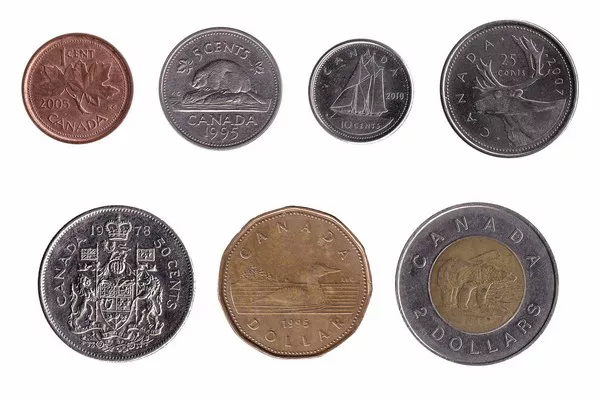The Canadian dollar, a key player in the global currency market, is subject to a myriad of factors that influence its value and trajectory. Analyzing the economic landscape, geopolitical developments, and external influences, this article aims to provide insights into where the Canadian dollar might stand in 2024. While predicting currency movements is inherently uncertain, examining relevant indicators and trends can offer a nuanced perspective on the potential factors shaping the currency’s future.
Current Economic Landscape
1. Post-Pandemic Recovery
The COVID-19 pandemic significantly impacted global economies, including Canada’s. As the country strives to recover, economic indicators, such as GDP growth, employment rates, and consumer spending, will play a pivotal role in determining the Canadian dollar’s trajectory.
2. Monetary Policy
The Bank of Canada’s monetary policy decisions, including interest rates and quantitative easing measures, will influence the Canadian dollar’s value. Central bank actions are crucial in managing inflation, fostering economic growth, and maintaining currency stability.
Global Factors Affecting Currency Values
1. Global Economic Trends
The Canadian dollar is intricately linked to global economic trends. Factors such as international trade dynamics, commodity prices, and overall economic sentiment on the global stage can impact the currency’s strength.
2. Commodity Prices and the Canadian Economy
Canada, as a resource-rich nation, is particularly sensitive to commodity prices, especially oil. The performance of the energy sector and the global demand for commodities will be key determinants in shaping the Canadian dollar’s outlook.
3. Geopolitical Developments
Geopolitical events, including trade tensions, political uncertainties, and diplomatic relations, can have a profound impact on currency values. Keeping an eye on international developments will be crucial in understanding potential risks and opportunities for the Canadian dollar.
Future Trends and Projections
1. Economic Growth Projections
Analyzing economic forecasts and growth projections for Canada provides valuable insights into the potential trajectory of the Canadian dollar. Positive growth expectations may contribute to a stronger currency, while concerns about economic performance could weigh on its value.
2. Inflation Dynamics
Inflation is a critical factor in currency valuation. The Bank of Canada closely monitors inflation rates, and their decisions regarding interest rates and monetary policy will be influenced by inflation trends.
3. Trade Balances and Currency Flows
Examining Canada’s trade balances and capital flows can offer insights into the demand for the Canadian dollar. A trade surplus typically contributes to a stronger currency, while a deficit may have the opposite effect.
Potential Scenarios and Risks
1. Currency Volatility
Currency markets are inherently volatile, and unexpected events can lead to sudden fluctuations. Traders and investors will closely watch for any signs of volatility that could impact the Canadian dollar.
2. Interest Rate Differentials
Interest rate differentials between Canada and other major economies influence currency values. Changes in interest rates by the Bank of Canada relative to other central banks can impact the attractiveness of the Canadian dollar to investors.
3. External Shocks
External shocks, such as natural disasters, geopolitical conflicts, or unforeseen global events, can have significant repercussions on currency values. Preparing for such contingencies is essential when assessing the Canadian dollar’s future.
Government Policies and Interventions
1. Fiscal and Monetary Measures
Government fiscal policies and central bank interventions can influence the Canadian dollar. Stimulus packages, budgetary decisions, and monetary policy adjustments are tools policymakers use to navigate economic challenges.
2. Currency Interventions
In certain scenarios, governments may intervene directly in currency markets to stabilize or influence their currency’s value. Observing any indications of such interventions will be essential for those tracking the Canadian dollar’s trajectory.
Potential Catalysts for Canadian Dollar Strength
1. Robust Economic Recovery
If Canada experiences a robust economic recovery with sustained growth, low unemployment, and increased consumer spending, it could contribute to a stronger Canadian dollar.
2. Positive Trade Developments
Favorable trade agreements and increased demand for Canadian exports could positively impact the Canadian dollar. Successful trade negotiations and partnerships may enhance the currency’s attractiveness.
3. Stable Commodity Prices
As a major commodity exporter, stability or an upward trend in commodity prices, particularly oil, would be beneficial for the Canadian dollar. The energy sector’s performance is closely tied to the currency’s strength.
Potential Challenges and Headwinds
1. Prolonged Economic Uncertainties
Persistent economic uncertainties, including challenges related to the post-pandemic recovery, could create headwinds for the Canadian dollar. Uncertain economic conditions may lead to cautious investor sentiment.
2. Global Trade Tensions
Escalating global trade tensions or protectionist measures could negatively impact the Canadian dollar. A challenging international trade environment may weigh on the currency’s prospects.
3. Fluctuating Commodity Prices
The Canadian dollar’s vulnerability to fluctuations in commodity prices, especially oil, poses a potential challenge. A decline in commodity prices could adversely affect the currency.
The Role of Technological Advancements
1. Digital Currencies and Innovation
The rise of digital currencies and financial technology may influence the broader financial landscape. While traditional currencies like the Canadian dollar are likely to remain dominant, technological advancements could impact the way currencies are used and transacted.
2. Blockchain and Cryptocurrency Developments
Advancements in blockchain technology and the evolution of cryptocurrencies may have indirect effects on traditional currencies. Monitoring developments in the cryptocurrency space can provide insights into broader trends in financial innovation.
See Also: CAD): History, Symbols, Codes, & Denominations” href=”https://fxcurrencyconverter.com/archives/41226″>Canadian Dollar (CAD): History, Symbols, Codes, & Denominations
Conclusion:
Forecasting the future of the Canadian dollar in 2024 involves navigating a complex web of economic indicators, global dynamics, and unforeseen events. While uncertainties persist, staying informed about economic trends, government policies, and international developments can provide a more nuanced understanding of potential scenarios.
Investors, businesses, and policymakers will need to remain agile in responding to changing conditions, seizing opportunities that arise amid challenges. The Canadian dollar’s journey in 2024 will unfold against the backdrop of a dynamic global economy, and its trajectory will be shaped by a combination of domestic resilience and the ability to navigate a rapidly evolving international landscape.


